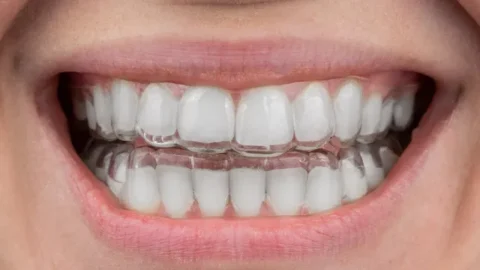Headaches that won’t go away can really lower a person’s quality of life, making it hard for them to do normal things and making them feel bad in general. Understanding the role of neurology in treating these persistent headaches is crucial, as it offers insights into advanced diagnostic methods and effective treatment options. Neurologists specialize in the complex workings of the nervous system, making them essential in diagnosing and managing chronic headache disorders.
Persistent headaches, also known as chronic headaches, occur more frequently and with greater intensity than episodic headaches. They include conditions such as chronic migraines, tension-type headaches, and cluster headaches. These headaches can be debilitating, often leading to significant physical and emotional distress. Unlike occasional headaches, persistent headaches require a comprehensive treatment approach to manage symptoms effectively and improve the patient’s quality of life.
The Neurological Approach To Headache Diagnosis
Neurologists are very important when it comes to diagnosing headaches that won’t go away. They use a variety of testing tools and methods to figure out why people get headaches all the time. The diagnostic process typically includes:
Detailed Patient History: Neurologists gather comprehensive information about the patient’s headache patterns, frequency, duration, and triggers. This history helps in distinguishing between different types of headaches and identifying potential underlying conditions.
Neurological Examination: A thorough neurological exam assesses the patient’s reflexes, muscle strength, sensory perception, and coordination. This examination helps in detecting any abnormalities that may indicate a neurological disorder.
Imaging Studies: Advanced imaging methods, like MRI (Magnetic Resonance Imaging) and CT (Computed Tomography) scans, are used to see how the brain is put together. These studies can reveal abnormalities such as tumours, vascular malformations, or other structural issues that might contribute to chronic headaches.
Laboratory Tests: Infections or inflammatory diseases may be to blame for headaches that won’t go away. Blood tests and other lab tests can help find these conditions.
Neurologists can correctly figure out the type and cause of headaches that won’t go away by using all of these diagnostic tools together. This is important for making a headaches treatment plan that works.
Treatment Options For Persistent Headaches
Neurologists at South Valley Neurology and other specialized centres offer a range of treatment choices that are tailored to each patient’s needs once a diagnosis has been made. These treatments aim to reduce headache frequency, intensity, and duration, ultimately enhancing the patient’s quality of life. Some of the primary treatment modalities include:
Medications:
Preventive Medications: These are taken regularly to reduce the frequency and severity of headaches. Common preventive medications include beta-blockers, antiepileptic drugs, and antidepressants.
Abortive Medications: These are used at the onset of a headache to alleviate symptoms. Triptans and nonsteroidal anti-inflammatory drugs (NSAIDs) are commonly prescribed abortive medications.
Lifestyle Modifications: Neurologists often recommend lifestyle changes to help manage headaches. These modifications may include stress management techniques, regular exercise, dietary adjustments, and establishing a consistent sleep schedule.
Behavioural Therapies: Cognitive-behavioral therapy (CBT) and biofeedback are effective in managing chronic headaches. These therapies help patients understand and change behaviours that may trigger or exacerbate headaches.
Physical Therapy: For some patients, physical therapy can help relieve muscle tension and improve posture, which can contribute to headache relief.
Botox Treatment:
Mechanism Of Action: Botox (botulinum toxin) injections are a fairly new way to treat chronic headaches that works very well. By stopping the release of certain chemicals that help send pain signals, Botox stops migraines before they start.
Procedure: The treatment involves injecting small amounts of Botox into specific areas of the head and neck. The procedure is quick, typically taking about 15 minutes, and is performed every 12 weeks.
Efficacy: Botox treatment have been shown in clinical trials to greatly lower the number of migraine days a person experiences, helping people who have not been helped by other treatments.
The Importance Of A Multidisciplinary Approach
Treating persistent headaches often requires a multidisciplinary approach. Neurologists collaborate with other healthcare professionals, including primary care physicians, physical therapists, psychologists, and pain specialists, to develop a comprehensive treatment plan. This way of working together makes sure that all of the patient’s problems are taken care of, which results in better, more complete care.
Patient Education And Support
Education is a very important part of dealing with headaches that won’t go away. Neurologists provide patients with information about their condition, treatment options, and self-management strategies. By understanding their condition and the factors that contribute to their headaches, patients can take an active role in managing their symptoms.
Support groups and counselling services are also valuable resources for patients with chronic headaches. These services offer emotional support, practical advice, and a sense of community, helping patients cope with the challenges of living with persistent headaches.
Conclusion
Neurologists are very important when it comes to diagnosing and treating headaches that won’t go away. They use advanced testing tools and a variety of treatment methods to handle this complicated condition. At South Valley Neurology, patients can get cutting-edge treatments, such as Botox, which has been shown to help a lot with chronic headaches. Neurologists can make the quality of life a lot better for people who have headaches all the time by using a multidisciplinary approach and focusing on patient education and care. The future looks even brighter for new and customized headache treatments as the study keeps moving forward.





